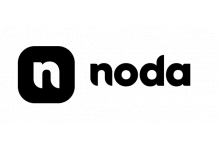Open banking connectivity: the outlook is better than you think

- Todd Clyde, CEO at Token
- 28.11.2019 10:45 am Open Banking
You have probably seen the headlines about banks not being ready for PSD2 – as the deadline approached and then passed, they were hard to miss. While it is true that less than 50% of banks have met all of the requirements mandated by the EU legislation, this is far from the full story. The open banking outlook for Europe is, in fact, brighter than perhaps you have been led to believe.
Let’s jump back to 14th March, the deadline by which European banks were required to have their ‘dedicated interface’ (open API) ready for testing by PISPs and AISPs. This was the litmus test for banks to prove PSD2 readiness and indicate their willingness to embrace the move towards open financial services. Not a straightforward task especially given the tight timescales, yet 90% of the 2,000 largest banks across Europe did produce the sandboxes and documentation required in time. Considering the scope of this exercise, that’s not a percentage to be scoffed at.
True, it hasn’t been plain sailing. Research, including our own, indicates that less than half of the European banks were ready to go live with their APIs before the 14th September production deadline. But did anyone really expect anything different? And are things really as bleak as others are making out? The short answer is no.
Open banking in the UK
In the UK regulators launched an even stricter timetable than the EU. By 13th January 2018, a full 20 months earlier, the CMA9 (a group of the nine largest banks and building societies across the UK), were mandated to begin a managed rollout of open banking for current accounts.
50% missed the deadline. In reality, it took another year for them all to publish accurate documentation, launch their sandboxes and stabilise their APIs.
PSD2 across Europe also brings key challenges that didn’t apply in the UK. For a start there is no central European directory of all ecosystem participants. And, crucially, there’s no mandated implementation specification. While this fragmentation is undoubtedly slowing market growth, has it halted progress altogether? Not at all.
A marathon, not a sprint
If APIs are to flourish and live up to their potential as the superior option to quick-fix screen scraping and other interface shortcuts, then it’s important that we get them right. Otherwise, they are nothing more than a gimmick (I talk more about this here). For banks to ensure their APIs are production ready, hours of testing and debugging are required. This takes time, patience and technical know-how.
Yet banks do have friends in the fight. Market platform providers, like Token, are connecting fragmented APIs from banks to a single API, standardising account access for third parties and providing a simple and quick way to deliver both data aggregation and payment solutions. This isn’t an easy task and involves securing eIDAS certificates, connecting to sandboxes, working through the stages of connectivity, testing AISP and PISP functionality, then doing it all over again in production. Over 3,300 banks across the UK, Ireland, Poland, Italy, Benelux, the Nordics, France, Germany, Austria and Portugal are benefiting from this approach. By the end of the year, we expect this number to be 4,500.
So progress is being made towards unifying the fragmented landscape and easing connectivity. API calls are increasing by the day and, although consumer and business adoption has been slower than anyone would have liked due to API availability and fragmentation, 2019 can still go down as the year that open banking started to come into its own.
Open banking in 2020… and beyond
Next year, both open banking services adoption and API calls will continue to increase. Dozens of early adopters like Caxton FX and StuRents are already utilising APIs for single payment use cases, like wallet loads and first rental payments. Others too will follow and, by the second half of the year, we can expect more sophisticated use cases in a range of different verticals to be brought to market.
In terms of the APIs themselves? More banks are recognising the commercial opportunities that open banking brings. This means there will be a transition from compliance APIs to premium ones that enable banks to offer richer data sets to third parties which they can charge for; opening the door to a whole host of new use cases, like ‘rule-based’ fund sweeping. In this case, account holders will be able to move money automatically from one account to another, by setting up ‘rules’ or ‘triggers’ that do not require them to be present at the time of the sweep.
These are just a taste of the value-added services that can be achieved using a standards-based API. The key to unlocking them, however, will hinge on banks’ ability to learn from mistakes of the past by partnering with a TPP that can help them achieve an API advantage. As the open banking landscape settles and the new ecosystem unfolds, it is this collaborative approach that will ultimately pave the way to new opportunities and with them new revenues.


























